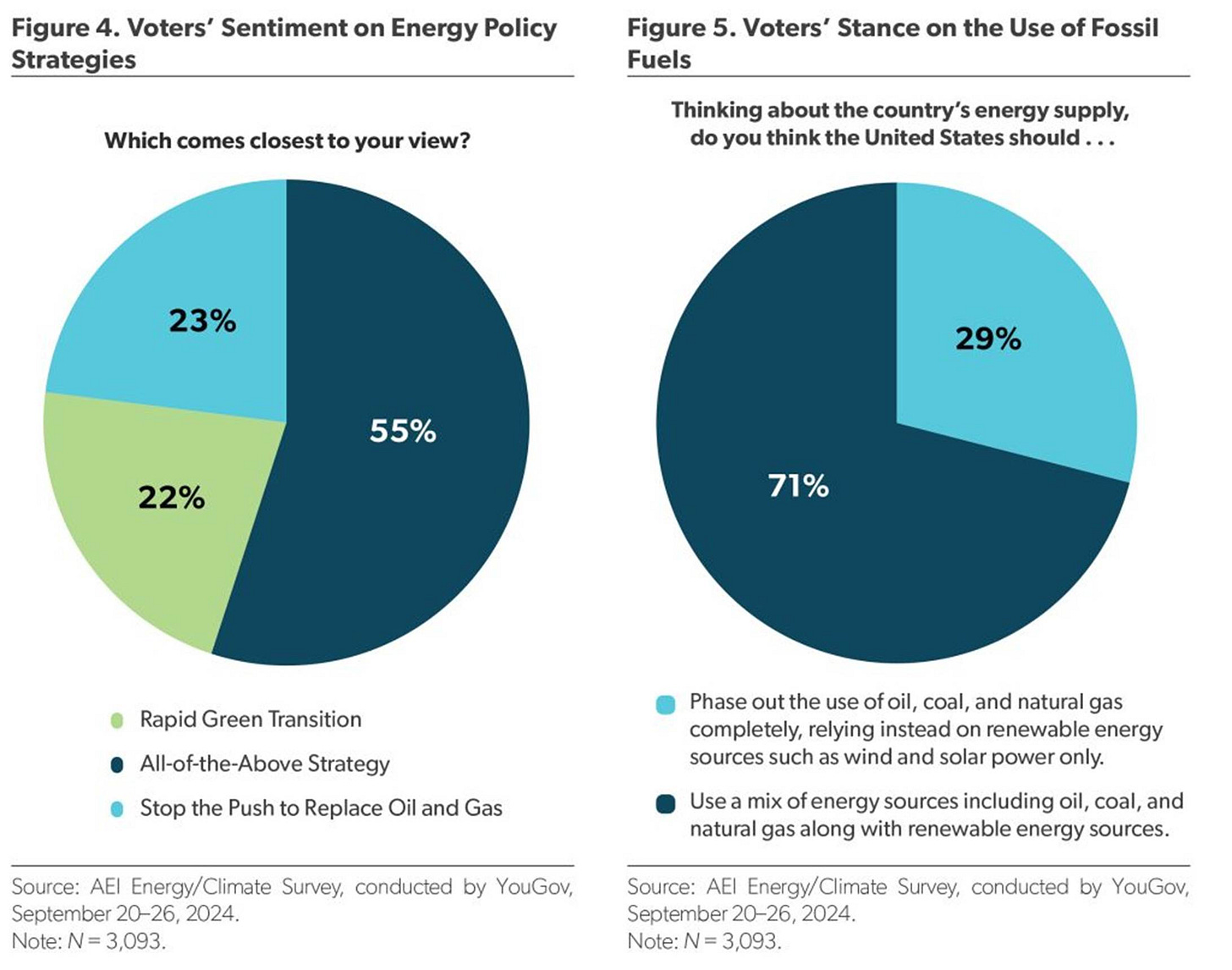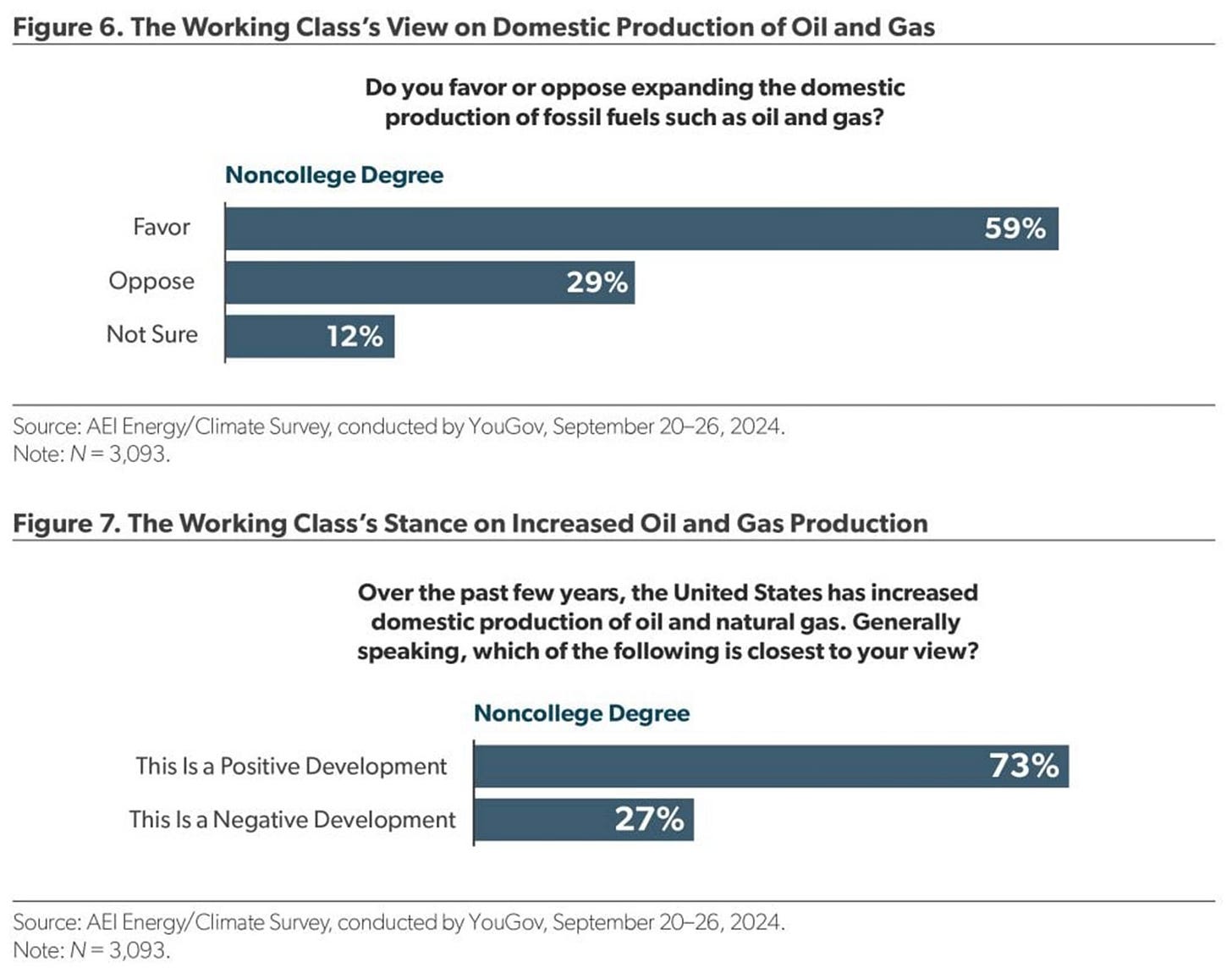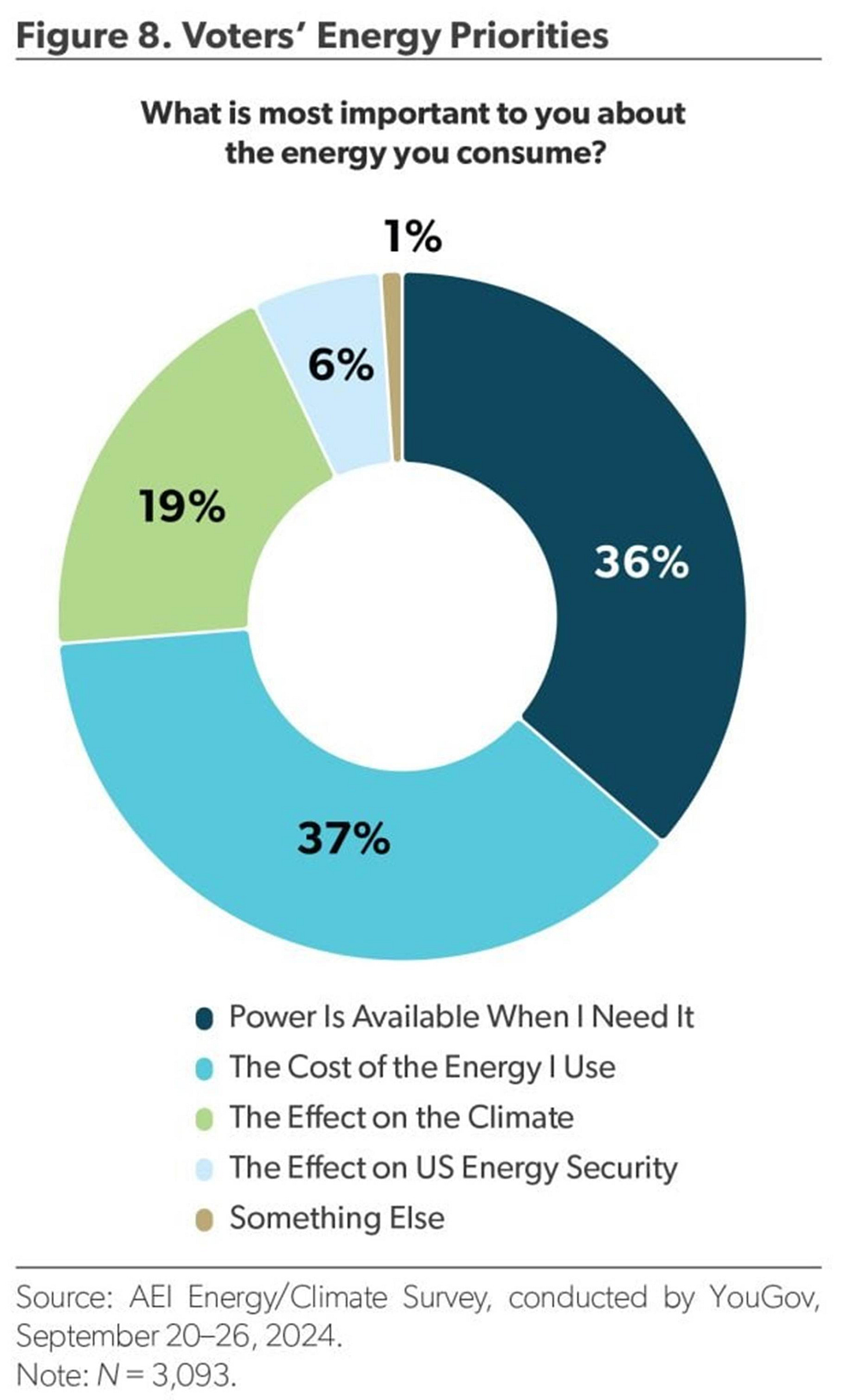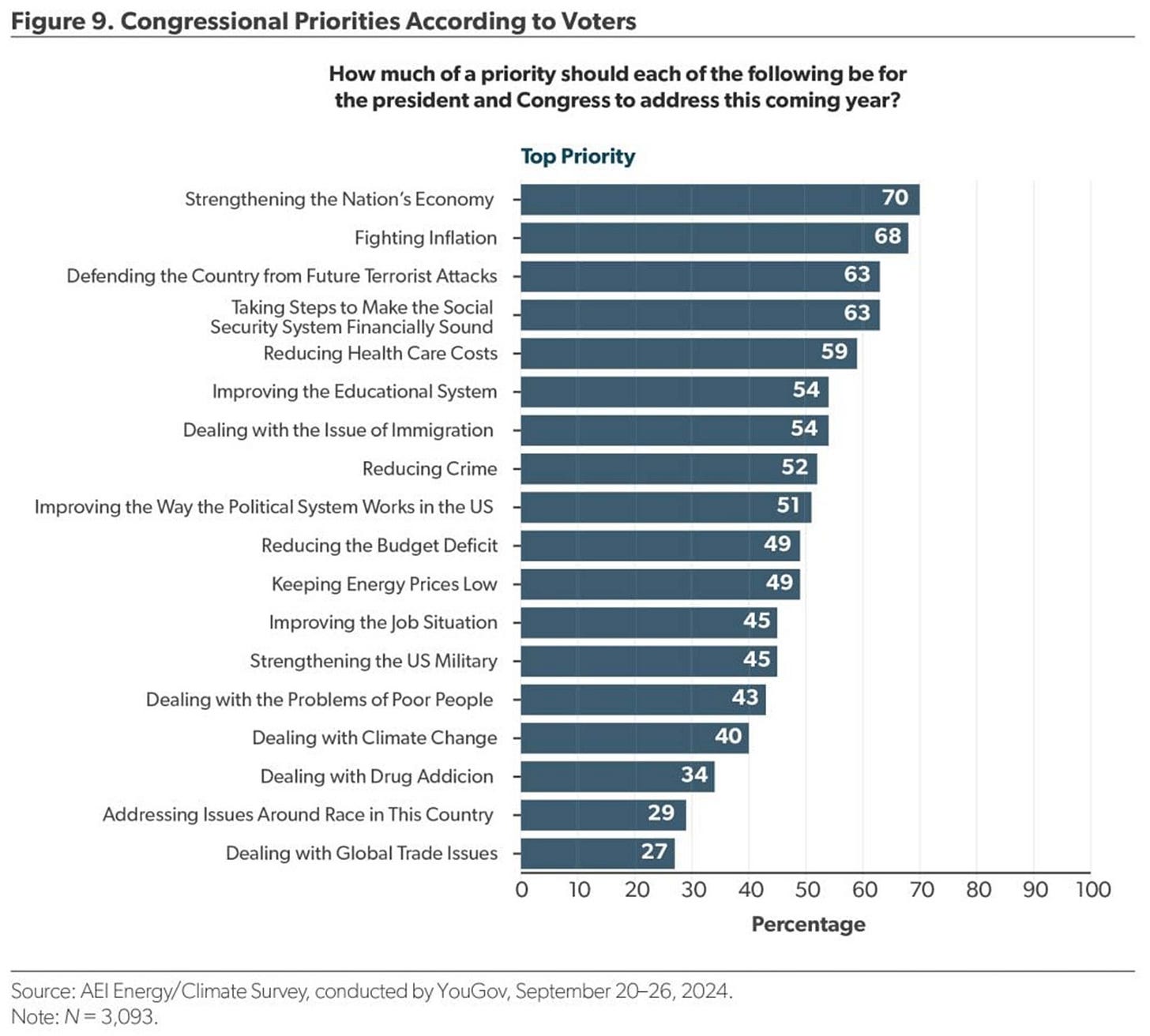Once upon a time, Democrats said this:
We can move towards a sustainable energy-independent future if we harness all of America’s great natural resources. That means an all-of-the-above approach to developing America’s many energy resources, including wind, solar, biofuels, geothermal, hydropower, nuclear, oil, clean coal, and natural gas. President Obama has encouraged innovation to reach his goal of generating 80 percent of our electricity from clean energy sources by 2035…We can further cut our reliance on oil with increased energy efficiency in buildings, industry, and homes, and through the promotion of advanced vehicles, fuel economy standards, and the greater use of natural gas in transportation.
That was in the Democratic Party platform for 2012. But Democrats changed their tune as the decade progressed. Obama’s continued commitment to an all-of-the-above energy policy started to be relentlessly attacked as insufficiently progressive. In 2014, 18 environmental organizations, including Earthjustice, the Environmental Defense Fund, the League of Conservation Voters, the Natural Resources Defense Council, and the Sierra Club sent Obama a sternly worded protest letter. They characterized his policy as “a compromise that future generations can’t afford. It…locks in the extraction of fossil fuels that will inevitably lead to a catastrophic climate future.” By the late teens, Democrats were in a completely different space than 2012.
In February 2019, Representative Alexandria Ocasio-Cortez (D-NY) and Senator Edward Markey (D-MA) formally introduced a congressional resolution advocating a Green New Deal. This Green New Deal proposal was everything the increasingly radical climate movement could have wished for and more. The proposal affirmed that the United States must become net zero on carbon emissions by 2030 through a dramatic and far-reaching transformation of every aspect of the economy. And far from entailing sacrifice, this economic transformation would provide full employment in high-wage jobs, accompanied by universal high-quality health care and housing. It would end all oppression of indigenous people, “communities of color,” migrant communities, and other “frontline and vulnerable communities.”
The proposal generated enormous publicity and was injected into the mainstream of Democratic Party discourse. Six Senators who would become contenders for the Democratic presidential nomination endorsed it: Cory Booker (D-NJ), Kirsten Gillibrand (D-NY), Kamala Harris (D-CA), Amy Klobuchar (D-MN), Bernie Sanders (I-VT), and Elizabeth Warren (D-MA). Sanders would go on to release a $16.3 trillion Green New Deal plan of his own during his campaign for the Democratic nomination.
Of course, none of these hopefuls garnered the Democratic nomination; Joe Biden did. However, while Biden declined to specifically endorse and use the Green New Deal language, he did put forward his own ambitious climate plan that was essentially a softer version of the Green New Deal proposals. And once in office he very much pursued his plan, resulting in his administration’s last major legislative accomplishment, the big climate bill disingenuously labeled the Inflation Reduction Act (IRA).
But the Democratic tune is changing once again. As Trump cancels or cuts back much of the IRA with remarkably little public protest, Democrats are starting to realize their Green New Deal-type plans are out of step with both the physical realities of America’s thirst for energy in the age of AI and what American voters actually want from their energy system. Their grand plans just don’t have much support, outside of professional class liberals and climate NGOs. A recent Politico article reported on the vibe shift:
“There’s no way around it: The left strategy on climate needs to be rethought,” said Jody Freeman, who served as counselor for energy and climate change in President Barack Obama’s White House. “We’ve lost the culture war on climate, and we have to figure out a way for it to not be a niche leftist movement.”
It’s a strategy Freeman admitted she was “struggling” to articulate, but one that included using natural gas as a “bridge fuel” to more renewable power—an approach Democrats embraced during the Obama administration—finding “a new approach” for easing permits for energy infrastructure and building broad-based political support.
The reality Freeman and other Democrats are waking up to is powerfully illustrated in a new AEI report, “The Science vs. the Narrative vs. the Voters: Clarifying the Public Debate Around Energy and Climate,” by myself and my AEI colleague, Roger Pielke, Jr. To support our effort to clarify that debate, we fielded the AEI 2024 Energy/Climate Survey about a month before the 2024 election. The survey asked more than 3,000 registered voters about their views on trends in extreme weather, IPCC climate projections, climate tipping points, favored energy sources, priorities and preferences on energy policy, willingness to bear costs to fight climate change, personal energy consumption behavior, and much more.
Here are some findings that show why Democrats are warming back up to all-of-the-above—and why the Green New Deal is basically dead.
First, what are voters’ overall views on the appropriate energy strategy for the United States? Answer: it’s all-of-the-above and it isn’t even close!
Does that mean voters actually want more fossil fuel production? Answer: yes they do, especially working-class voters!
What is most important to voters about the energy they consume? Answer: it’s cost and reliability (not climate) and it isn’t even close!
What’s most important to voters about efforts to fight climate change? Answer: it’s keeping costs low and promoting economic growth (not getting to net zero) and it isn’t even close!
How important a priority is fighting climate change for voters anyway? Answer: not very important at all!
And how much would voters be willing to sacrifice to combat climate change? Answer: very little, especially working-class voters!
These findings make clear why the Green New Deal is out and all-of-the-above is back in. As we wrote in the conclusion to our report:
None of this comports well with the standard narrative. Rather than being motivated by the climate “crisis” to place a high priority on fighting climate change—as the narrative insists they must—voters are far more interested in the cost and reliability of the energy they use and the convenience and comfort of their energy-using products. They are unwilling to sacrifice much financially to address climate change or significantly change their consumer behavior.
That’s the reality. What people want—and need—is abundant, cheap, reliable energy. Therefore, if what you are advocating appears to have little to do with that goal and in some ways undermines it, no amount of rhetoric about a roasting planet and no amount of effort to tie every natural disaster to climate change is likely to generate the support needed for what is sure to be a lengthy energy transition…
Our findings suggest that climate change policy, in the end, must be embedded in and subordinate to the goal of energy abundance and prosperity. In other words, as energy abundance is pursued, efforts to mitigate climate change should be undertaken within those boundary conditions, rather than climate change being pursued as the paramount goal and with energy abundance limited by pursuit of those goals. The approach recommended by the narrative has things exactly backward.
It’s time to replace the narrative with something that makes scientific, political, and economic sense. We suggest this: Climate change is a serious problem, but it won’t be solved overnight. As we move toward a clean-energy economy with an all-of-the-above strategy, energy must continue to be cheap, reliable, and abundant. That means fossil fuels, especially natural gas, will continue to be an important part of the mix. Climate policy will be much more effective if it works in the direction of public opinion, rather than against it.
That’s a lesson Democrats are starting to learn and will lead them inevitably toward embracing an all-of-the-above energy policy. Let the real debate begin: how to pursue an all-of-the-above strategy and weight different goals and tradeoffs. That’s a debate the nation very much needs to have, not a culture war over a chimerical Green New Deal.
Author’s note: There’s much much more in the report than covered above so make sure you check out the whole thing! The survey topline and crosstabs are also available for your edification.










Further evidence that the "narrative" progressive Left continues to be a costly drag on the Democratic Party's current and almost certain future political fortunes.
If you can't convince a majority of Americans of the wisdom of your radical ideas, then you can't win elections and govern. About all you can do -- and it's what the Democratic Left does best -- is assume that it is somehow of such superior intellect the unwashed masses simply cannot comprehend. And that's the very definition of an elitist, arrogant snobbery.
"Here are some findings that show why Democrats are warming back up to all-of-the-above"
The less kind but more accurate description is that Democrats are being dragged kicking and screaming to an all-of-the-above. Whether we actually move toward an all-of-the-above approach is a question of pure power politics. My hope is that the current administration has their foot to the floor to accomplish the maximum amount possible before 2026.